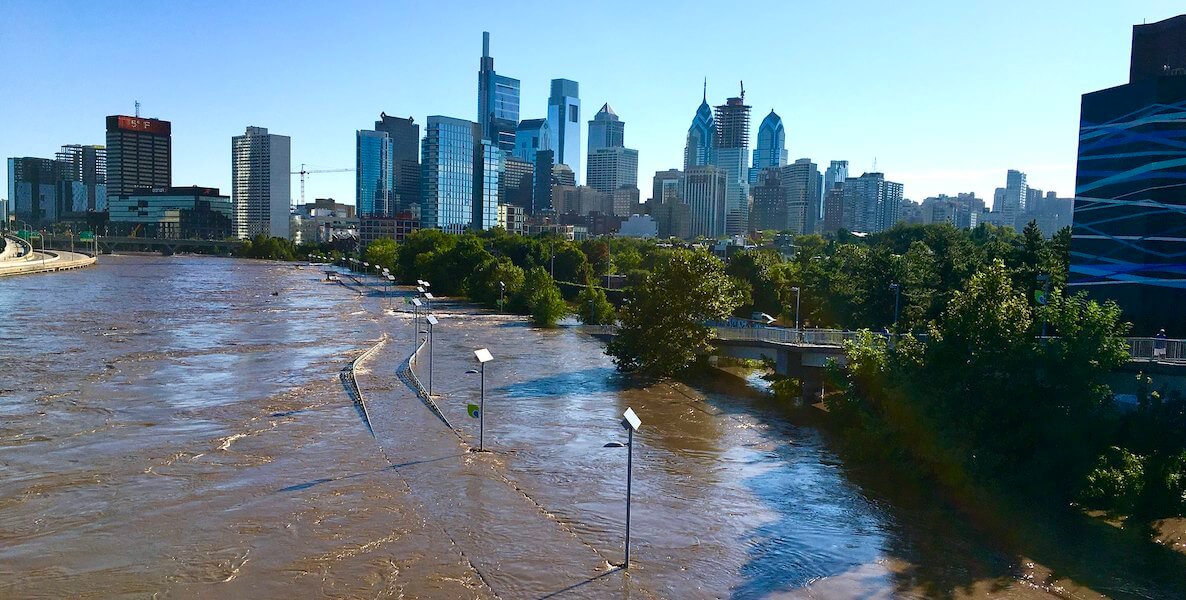Sorry to be a downer, but no, you’re not imagining it: We watched more natural disasters unfold last year than any other heretofore.
The U.S. logged a record-setting number of weather and climate catastrophes, with a corresponding record-setting cost of $23 billion and — worse — countless lives upheaved. And that was just the natural disasters. Didn’t we also all see more than our share of human-wrought destruction, in this country and beyond?
The upshot — well, one of them — is that where once it maybe felt a bit easier to tune out the what-ifs and what-thens when it came to contemplating disaster, 2023 made it much (much!) harder not to wonder what would happen if our city had to deal with, say, a train of toxins derailing in a crowded neighborhood, or a climate disaster on par with Lahaina’s wildfires. How might Philly fare in the face of the unexpected, the unimaginable — dare I say, the inevitable?
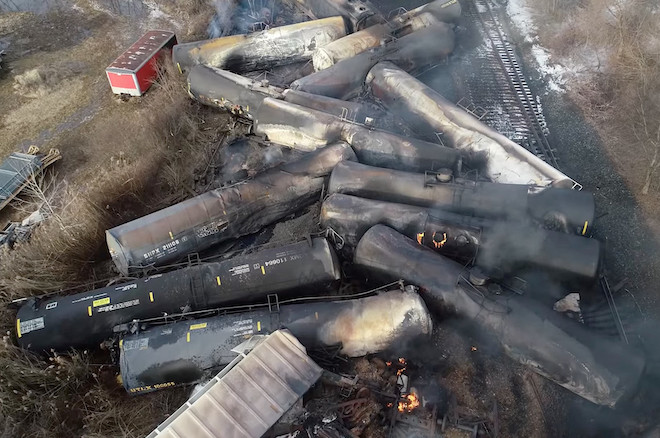
To answer this question, The Citizen turned to Dominick Mireles, director of the Office of Emergency Management, a relatively under-the-radar municipal department that oversees much of the city’s disaster planning.
Mireles would tell you right off the bat that there isn’t much out there that can be categorized as “unexpected” or “unimaginable” — not for him, anyway. He and the team of 40+ people at OEM study trends in the region and the world and prepare for possible emergencies here, what they call “response to and recovery from” disasters.
“A lot of these things come down to how are you going to protect and save people immediately and where are you going to need more capacity?” — Dominick Mireles, Office of Emergency Management
“A lot of our exercises are thinking, Well, that’s bad, but what would be REALLY bad in this scenario?” Mireles says. In other words, if you’ve wondered about it, they’ve probably planned for it. And a big part of this role, Mireles adds, is connecting with the various city, state and federal government agencies, from FEMA to PennDOT to the Philly Fire Department and L&I — plus community groups — to coordinate responses to everything from floods to large fires to, yes, I-95 melting into sludge.
One of the hallmarks of the OEM is its sprawling, public 364-page Hazard Mitigation Plan, which aims to reduce the chance and damages of “natural and human-caused hazards” that might befall us. This includes in-depth analysis of current local vulnerabilities, ways the city addresses them, who is in charge of managing which risks, and where inequity might play a role increasing certain hazards (like heat).
If you think such detailed planning in case of emergency is just de rigueur, consider: According to The Hill, Philadelphia is one of only seven major U.S. cities that have updated and strengthened their evacuation plans since Hurricane Katrina … 18 years ago. Which is both reassuring and … not.
Here, Mireles talks about regularly updating the disaster plans, plus which types of catastrophes offer the most reasonable cause for concern in Philly, the texts and emails that every smart Philadelphian should sign up for, and more.
Interview has been edited for length and clarity.
The role of the OEM seems pretty sprawling — planning “response to and recovery from” emergent disasters and planned public events. So we’re talking about being in charge of everything from, say, tornadoes to the 2026 World Cup?
Yes. Though I would take exception to “in charge.” We’re a coordinator, kind of a support entity that brings a whole of government and even whole of community response to both emergencies and disasters, but also larger complex events.
You can think of us like a party planner. The planner isn’t the one cooking the meal. The planner isn’t the band, or the DJ, or the one rolling out the tables. But they are the one who knows who is responsible for what, and ensures all those things are integrated, so that in the end you have a successful party.
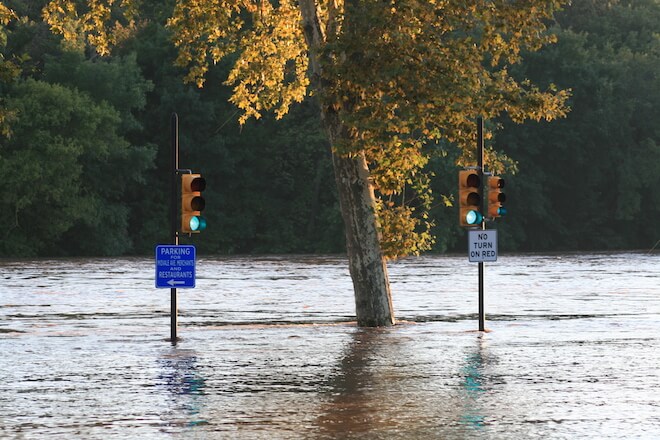
We’ve covered floods, large fires, various elements of the pandemic response — from vaccine efforts to isolation — civil unrest, and some of the looting events that have occurred in the city. Our planning includes FIFA; it included the papal visit. It includes Welcome America and Made in America, annual festivities in the city, and heat health emergencies. We have plans for natural hazards, technological hazards and human-caused hazards — everything from severe weather to terrorism to an I-95 collapse.
We take an approach meant to be flexible to the incident at hand and scalable, but that is really rooted in a keen understanding of what our risks are and what the likelihood are of those risks and what functions would need to be called upon to address those risks.
So which disasters are high up on your list?
There’s a great chart in the Hazard Mitigation Plan that presents scenarios in overall risk order. It starts with flood, including flash flooding and ice jams, then opioid addiction, then pandemic and infectious disease. Underneath that is extreme temperature, then hurricane, then urban fire and explosion, and then it goes on into other scenarios.
These are ranked by taking into account how probable it is, how big of an event that scenario would be, how large of a geographic area would be impacted, how long it would last and how much warning we would have. Whether it’s a natural event, a technological event or a human cause — as in, somebody does something intentionally — we have plans to address a lot of those things.
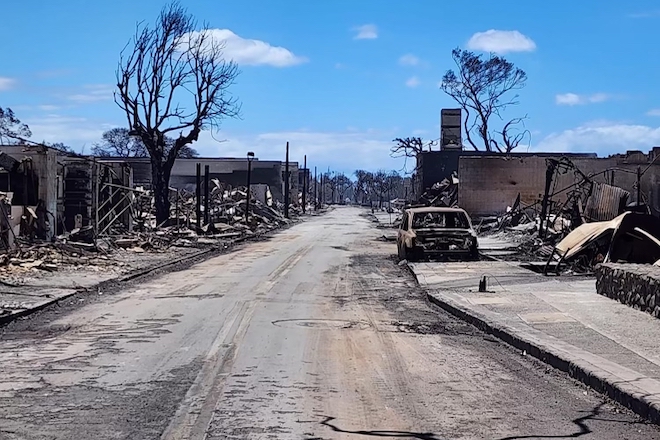
So if the Pope’s in town, does the OEM have a plan in case something bad happens to him? Or if a tornado touches down in the middle of Philadelphia?
It’s a really nuanced answer. There are a lot of different authorities and capabilities that we keep inventory of, so to speak, and then know how and when to leverage them. Sometimes they have their own plans that we just need to be aware of, to understand how they coincide with other plans.
So for your example, no, the Office of Emergency Management in particular would not be planning for impact to an individual — the Pope — like that. However, we are adjacent to, and aware of, the U.S. Secret Service and their role, and who they rely on to deal with a situation like that, and what city agencies are a part of their plan. Knowing how they will all react allows us to then focus on public reaction.
What does the planning process look like?
Well, we write two types of plans. The first are what we call “functional” plans. An example of that would be how we shelter a large group of people. Whatever the cause is — severe weather, fire, pick a thing — how do we provide shelter?
I’ve wondered this before. Where would we shelter groups of people?
We have several options listed in the Mass Care & Shelter Plan. Immediate, localized and short-term events would rely on a SEPTA bus to provide temporary respite for displaced people at the site of the incident.
If we need to provide provisions like food or restrooms, we will look for a reception center that’s in the area or pre-identified in our plan. This could be a rec center, a Free Library, school, church, or other privately-owned and operated space that’s temporarily offered. Neighbors helping neighbors.
“There are always going to be situations that come up — emergencies happening while we’re already dealing with another emergency, or an emergency that happens in the middle of a snowstorm — and the first responder is your neighbor, or the folks within your community.” — Mireles
If the incident looks like it will require a significant number of people to sleep outside of their home, we’d activate an evacuation shelter, which is a School District of Philadelphia location. We’ve prioritized 20 SDP locations across the city after assessing 84 of them. And for very large incidents, we have relationships with larger venues in the city — arenas and event spaces — as well as the American Red Cross and the PA Emergency Management Agency.
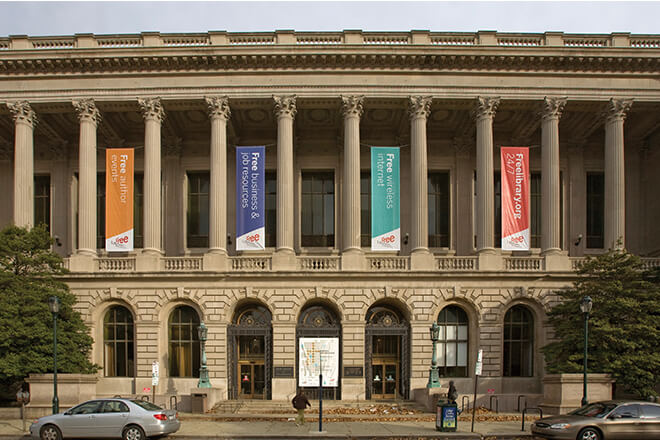
You mentioned two types of plan — what’s the second?
We write “hazard-specific” plans, too, which are more focused on how we react and tie together several functions — like in the case of a hurricane, for instance.
The planning process is very collaborative. OEM writes the plan, but every city agency or organization that has a role in that effort is written into that plan. And then we talk about how we train it and exercise it — not only to make sure that everybody knows their role, but also to see whether people get what they need, and whether it went as successfully as possible.
So are we talking about actual drills for some disasters or hazards?
Yes. We organize and participate in both “discussion-based” and “operations-based” exercises. Operations-based activities include drills, functional exercises, and full-scale exercises. For example, this past October, we supported and participated in the Philadelphia International Airport Emergency Preparedness Exercise. We held one exercise with military officials in July of 2022, and another with regional first responders in April of 2022. And we’ve been participating in and organizing functional exercises for many years — one big example being just ahead of the 2015 papal visit.
What are the discussion-based exercises?
We use what we call “tabletop exercises” pretty regularly to give folks the opportunity in a low-stress environment to ask what if — to work through what those roles and responsibilities are, but also to innovate and to say, “Hey, did we ever think about doing it this way?”
We go through many efforts. Some of them are annual, some semi-annual, some every five years. For instance, the city’s Hazard Mitigation Plan looks every five years at what risks we are most concerned about — and that’s not just coming from the OEM. There’s public engagement on that plan as well.
We look at those risks in terms of how likely they are, how impactful they might be, how much warning time we might have, and then they’re prioritized in order of the most impactful scenario arising from them. We use that information to then make sure that we have those hazard-specific and function plans ready to address what we’ve identified in the Hazard Mitigation Plan.
I was pleased and surprised to read reports suggesting that Philly was one of the few large cities in America with a strong evacuation plan. What, exactly, is that plan?
You’re not going to like my answer, which is … it depends.
I thought you might say that.
It depends on the incident type, of course. It depends on time of day, it depends on location, it depends on the wind, it depends on whatever else is occurring at that point in time.
To an extent, Philadelphia is really fortunate in that there are a lot of ways to get out of the city. And so our evacuation plans really think about how, if we need to get people in bulk, how do we go from literally where they’re at to emergency responders, to saying “You need to go somewhere else,” and directing them to that next point, for which we rely a lot on SEPTA buses and on school districts and Parks & Recreation facilities. And we’ll have more information or more resources for you there.
“You can think of us like a party planner. The planner isn’t the one cooking the meal. The planner isn’t the band, or the DJ, or the one rolling out the tables. But they are the one who knows who is responsible for what, and ensures all those things are integrated, so that in the end you have a successful party.” — Mireles
From that point, we can really start to understand who needs a place to stay, who has nowhere else to go, or who really just needs to get access to their vehicle and get out of here, put their own plans into place. And so that’s where we can then start referring people on, especially in a more catastrophic scenario.
We do building evacuation and even sometimes block evacuation on roughly a weekly — at the very least biweekly — basis just with everyday emergencies in Philadelphia really. So we’re exercising the early parts of that pretty regularly.
And the big evacuations?
This is where my big caveat comes in. We certainly have thought about this, have certainly written a plan that’s very kind of conceptual and plays off of some of our other experiences. And — I say this at the risk of jinxing anything — we’ve not had to exercise or really validate it, to see if we get tens- to hundreds of thousands of people out of the same area all at once.
As an analogy: If you’ve ever been to any of the sports games or a concert down in South Philadelphia when 60,000 people try and leave the same area all at the same time, even people who have a mass transit system all set and ready to go and people who all came in their own cars, right? There’s nobody without a plan, so to speak. You’re still sitting in traffic.
Right, and in that scenario — unlike an emergency — nobody is really panicking about it.
Exactly. So while we’ve certainly appreciated and have thought about these things and have put those plans together, there’s a big validation question as related to mass evacuation. And so that’s where we again go back to making sure folks realize their responsibility in that and making sure that a lot of our efforts are really going to be on communicating with people efficiently and quickly in those scenarios. And then realizing that we’re going to have to take a finer paintbrush to certain elements as those things come up.
How, exactly, do the people coming up with these plans know what to do? Do all the OEM honchos across cities get on a group Zoom after something like, say, the Boston Marathon bombing and talk strategy?
Those with emergency management responsibilities, including public safety and infrastructure/utility partners — as well as health and medical partners — participate in regular risk assessment and capability-setting activities. As a part of emergency planning, these activities occur regularly, and are sometimes mandated through state and federal requirements.
Additionally, we collectively evaluate the response to events in Philadelphia as well as nationally and internationally to understand what went well or what could be improved. And, very specifically, the Philadelphia Office of Emergency Management works regularly with the Pennsylvania Emergency Management Agency, the Federal Emergency Management Agency (FEMA), county emergency management agencies in the Southeastern Pennsylvania region, and with the Big City Emergency Managers group, which is comprised of the 20ish most populated U.S. cities emergency managers.
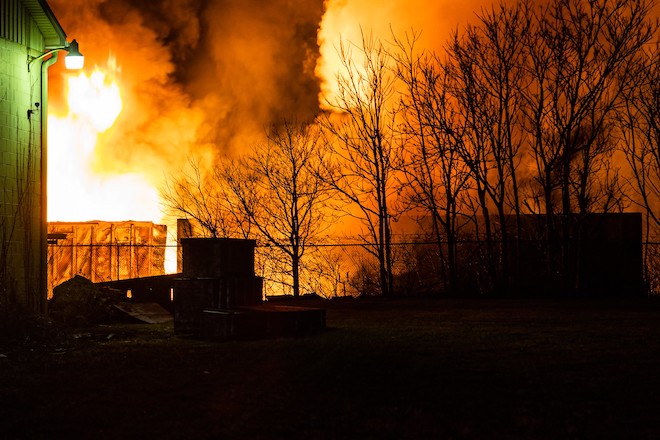
When something like the train derailment in East Palestine, OH, happens — or even a terrorist attack like what we witnessed in Israel on October 7 — does it keep you up at night, in a professional sense? As in: Wait, here’s some terrible event we don’t have a plan for.
They don’t keep me up from a surprise standpoint — we’re the disaster-minded folks. It really should be no surprise to a professional practitioner in this field that these things can happen. We’ve all lived through the pandemic: Look how quickly it went from being “contained” to now the whole country’s in lockdown. And then, international events like the withdrawal from Afghanistan turned within days into tens of thousands of people being flown through the Philadelphia International Airport and needing various levels of support and various levels of coordination right down here in South Philadelphia.
It’s virtually impossible to plan for every single scenario — meaning something happens on this type of day, or at this intersection, while this activity is occurring adjacent to it. So our plans are meant to be scalable and flexible. A lot of these things come down to how are you going to protect and save people immediately and where are you going to need more capacity?
Since you mentioned it, what was OEM’s role in helping the Afghan refugees?
OEM was at PHL 24/7 as flights arrived and served as an-on-the-ground coordinator amongst the military, federal, state, local and nonprofit entities. We also served as an off-site coordinator for the health and medical community.
A lot of what you do is about keeping the public safe. What’s the public’s role in that?
Every individual has some level of responsibility. We like to advertise to folks that you should know what to have in your head, know what to have in your hand, and know what to have in your home. That means preparing a go bag for home. It means knowing how you’re going to get information, how you’ll get alerted about an emergency.
We offer a subscription service that’s free to folks called Ready Philadelphia. You can sign up to get that information via phone or email. We also offer training courses called Ready Home and Ready Business. And then we also do a really intense Ready Community workshop where we come help a community identify vulnerabilities, community resources and a plan, should a bad day happen in the neighborhood.
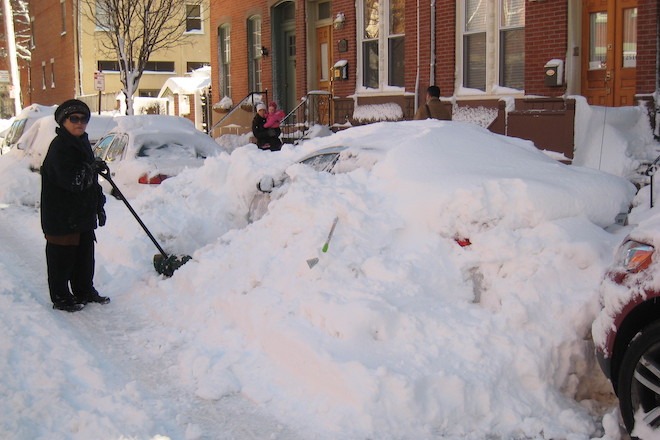
But it’s absolutely a challenge. Anybody who was here and paying attention saw the public’s response when we were concerned about the possibility of chemicals in the Delaware River. A lot of people ran to their grocery store and picked up as much water as they possibly could. For years, we’ve said that you should have a three-day drinking water supply for the number of people in your home. And we’ve learned for a whole bunch of reasons — and I mean, this is not finger-pointing at the public — but for a whole bunch of reasons people don’t or can’t prepare to that level. So there’s a gap there and it’s a gap that we anticipate in our plans as well. There will be some level of folks who are going to be vulnerable in these situations that are going to need extra care, extra attention.
And regardless of how well the plan is written, there are always going to be situations that come up — emergencies happening while we’re already dealing with another emergency, or, say, an emergency that happens in the middle of a snowstorm — and the first responder is your neighbor, or the folks within your community. Maybe it’s the block captain who is really good at keeping that neighborhood phone and email chain up to date. And so it really is a shared responsibility.
![]()
MORE ON DISASTER PREPAREDNESS IN PHILADELPHIA



